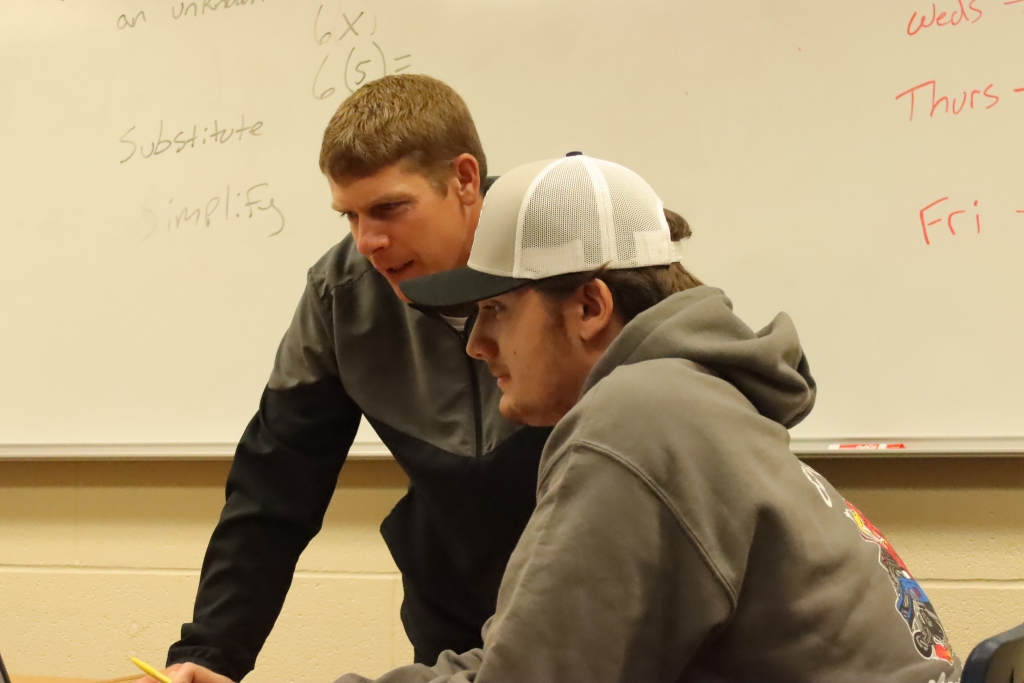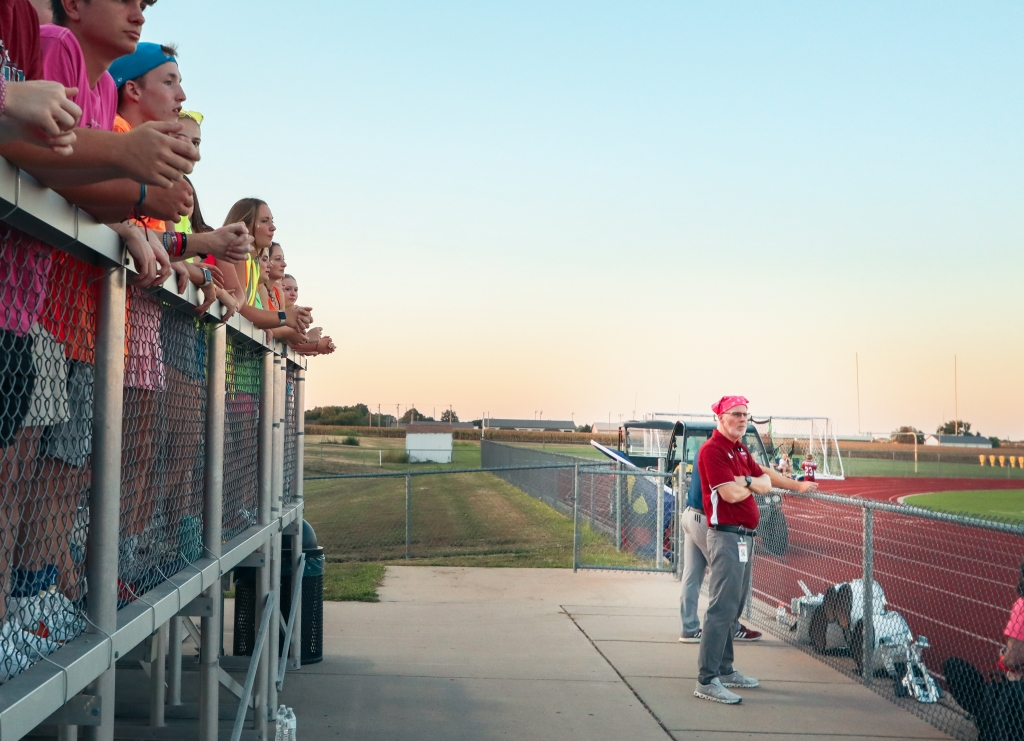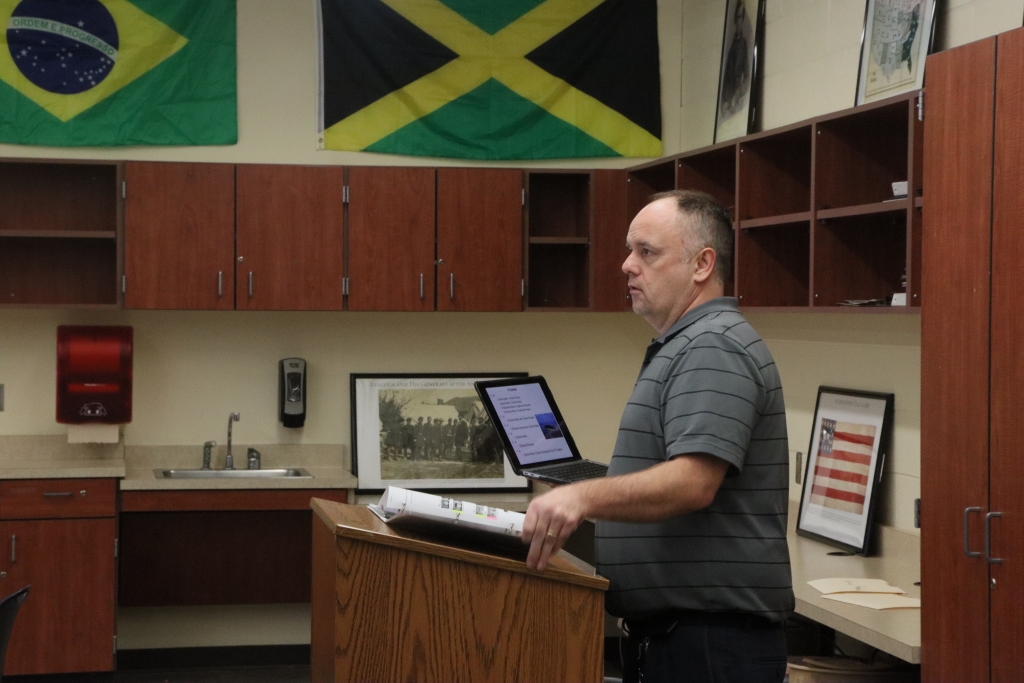Sickness at EHS

story by Sydney Shain ≫
Attending school with hundreds of other students can raise your chances for coming down with the common cold, strep throat, the flu, and other illnesses. As the year comes to an end, one thing that many might be looking forward to is the opportunity to not only avoid sickness, but to properly deal with and recover from it when it does occur.
Second semester finals can be avoided with a certain amount of “early outs”, which are earned with good attendance, grades, and a lack of behavioral issues. However, this sometimes means that students are motivated to attend school while they’re sick instead of getting the rest that they might need.
“I will have students who come in vomiting, and I will have students who will come in with a fever and they want to stay, because they want perfect attendance, they want to make early outs, and all of that,” said Mrs. Young, the school nurse. “They don’t have a choice. Not if they’re running a fever or if they’re vomiting because they’re putting other kids at risk so they have to go home.”
While some students need to be encouraged to stay home, other students need to be encouraged to return to class. Sometimes their sickness is more minor, but recurring. Their situation is different then, and it is the responsibility of the nurse to convince them that their attendance is something to pay attention to.
“The students that miss a lot of school, or they’re not making the best possible grades due to their attendance, I do really try to encourage those students to stay in school,” said Young.
How does missing school because of sickness affect the classroom? Mara Olsen, Frosh., came down with mononucleosis during this school year.
“When it started it felt like I had like a head cold or strep throat,” said Olsen. “It got worse with time. I just got more tired as the days went on, and when I started to feel better I would try to go do things, and I would get worn out and sleep the whole next day.”
Mono is one of the sicknesses that pops up every year here at EHS, according to Mrs. Young.
“We do get a few cases of mono every year,” said Young. “Some of them are reported, and then there are some that are not reported because it’s up to students to report things.”
According to the Mayo Clinic online, you’re more likely to get mononucleosis with the full spectrum of symptoms as a teen or young adult. This means that students are in their prime to feel the full weight of the sickness. What, then, does that mean for schoolwork?
“I stayed home for at least a week, if not more,” said Olsen. “It did make it a lot harder to catch up on school work, but all my teachers were really understanding and helpful. I did miss a lot of tests and quizzes, which were very hard to make up.”
According to the New York State Health Department, mononucleosis is spread through the transfer of saliva, which can mean kissing, sharing water bottles, and even sneezing and coughing. However, some illnesses are not spread through person-to-person contact.
The journalism staff took swabs of specific surfaces throughout the school and allowed them to culture in petri dishes to see what kinds of bacteria and even molds might be present on the objects we come into contact with every day. What was found (and shown in the photos that accompany this story) was a surprisingly large number of bacterial colonies that had grown. For example, the men’s restroom door handle was shown to be in contact with bacillus subtilis, a healthy bacteria, along with staphylococcus, streptococcus, and other more difficult bacterial colonies to identify. The women’s restroom door handle housed these same bacteria, but there were far less colonies growing from that sample.
There are less obvious surfaces, too, which are subject to almost constant contact with multitudes of students and their germs. The printers, for example, were teeming with multiple varieties and seem to be cleaned less often than the bathroom door handles due to the amount of bacteria that was found. The water fountains were housing harmful organisms as well, but still not as many as the printers. To be sure to keep themselves protected from sickness in the most efficient way, students might take the time to use hand sanitizer or wash their hands regularly throughout their day, instead of only after using the restroom or water fountains. These places are used often, and it is obvious that they should be cleaned regularly. But from our findings, the more inconspicuous items that are used every day are the main culprits when it comes to breeding grounds for bacteria.
All of these physical microorganisms can affect students and their health. However, the one variable in students’ lives that can be used to find trends in the number of students that are sick is stress. Mrs. Young claims that every year, like clockwork, students who are more prone to stress and overworking themselves are found to get sick much easier and much more often. Freshman coming into a new environment and schedule are sick at the beginning of the year, sickness picks up as finals approach and students find themselves getting less sleep and studying more, and seniors stressed towards the end of the year about the next chapter in their lives.
“I would say a good portion of our visits sometimes are not so much that [students] are truly ill, but more so that they just need a break,” said Young. “Their stress, their anxiety, their worrying, is a factor on their [gastrointestinal] system. I think that happens a lot more than people realize. A lot of what we’re seeing isn’t illness as in somebody has a cold or strep throat, but more so mental health issues.”
According to the American Psychological Association, stress weakens your immune system and makes you more susceptible to multitudes of illnesses. Preventing or attempting to address stressful factors in school and in your personal life can have an overall positive affect on your health. School is winding down, but if stresses follow you into your summer break, you could still get the occasional cold or upset stomach that you experience during the school year.







